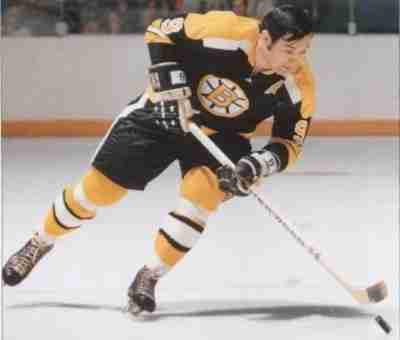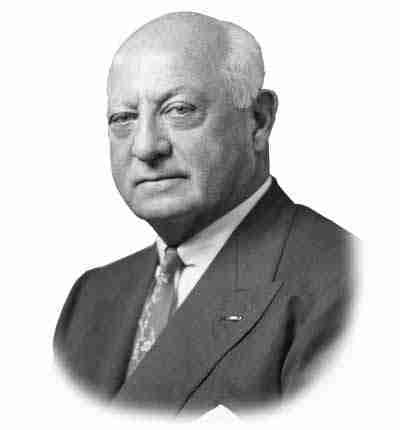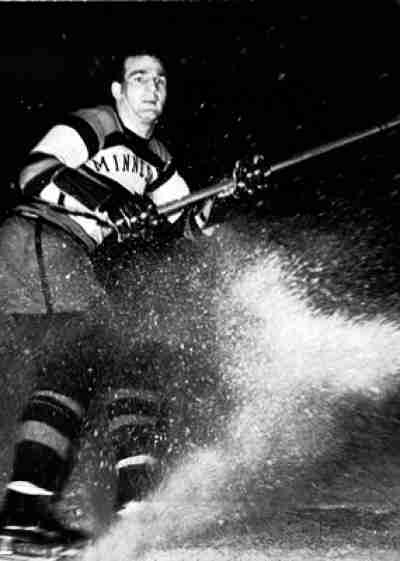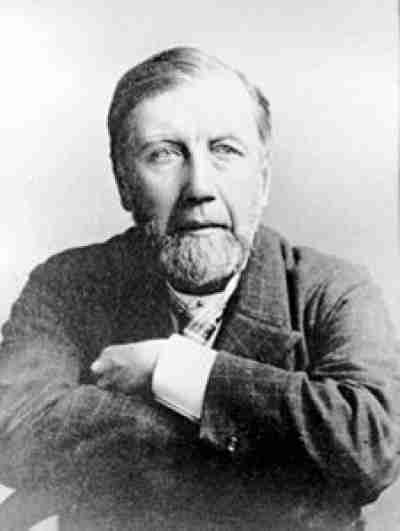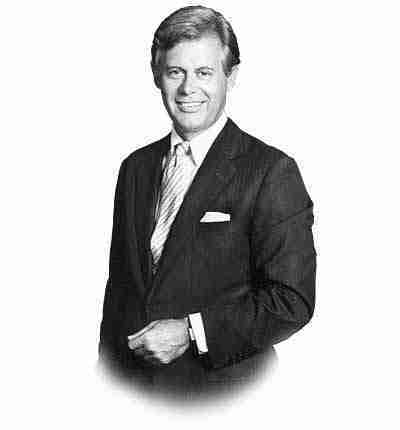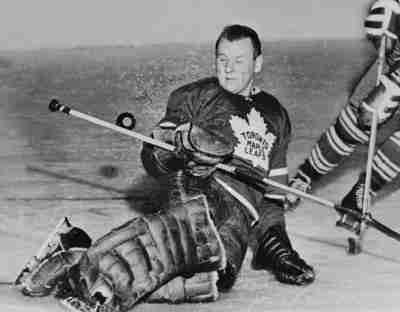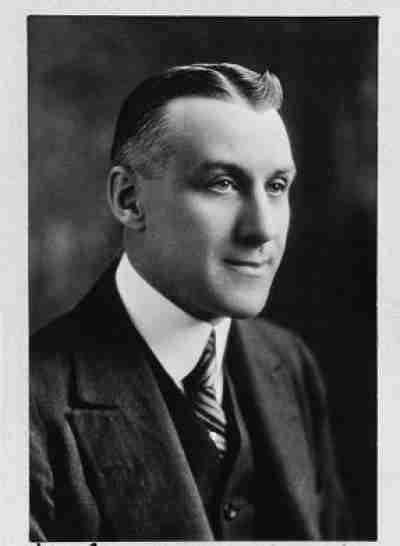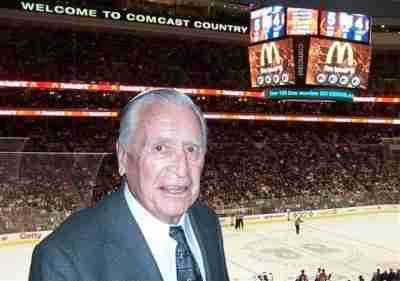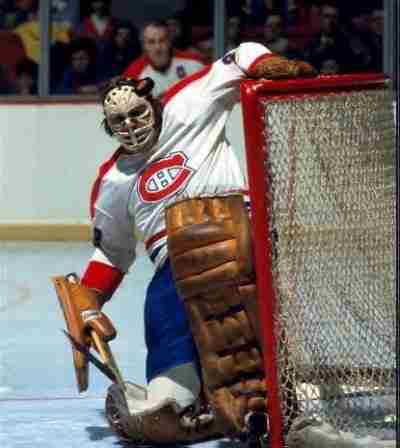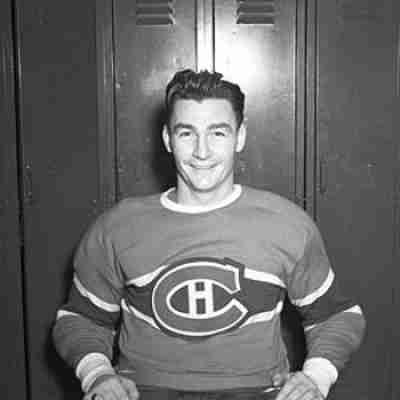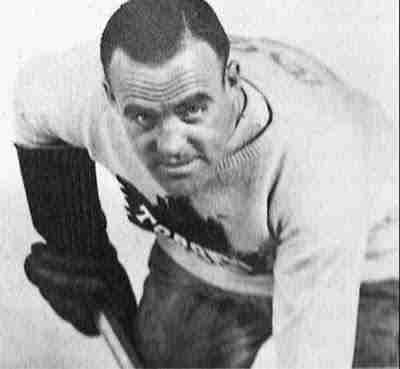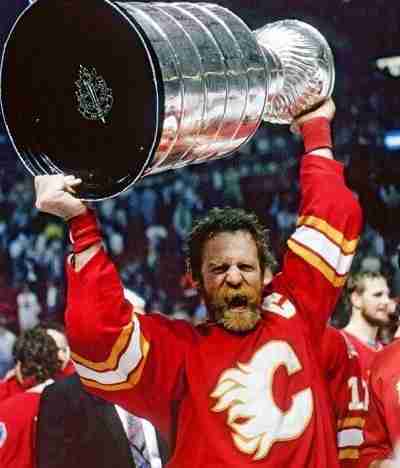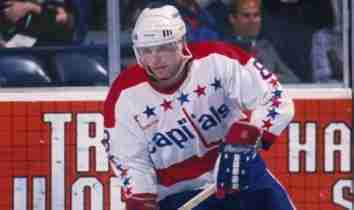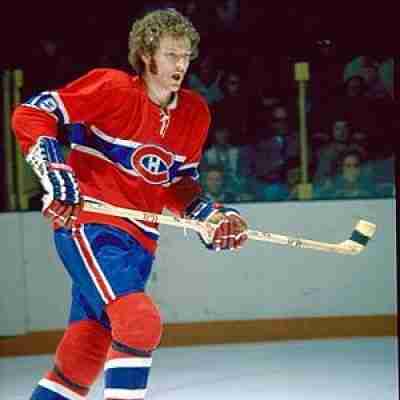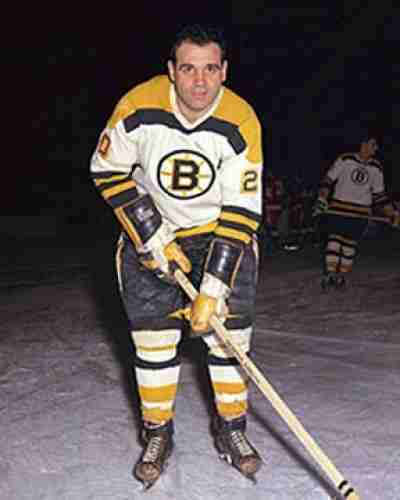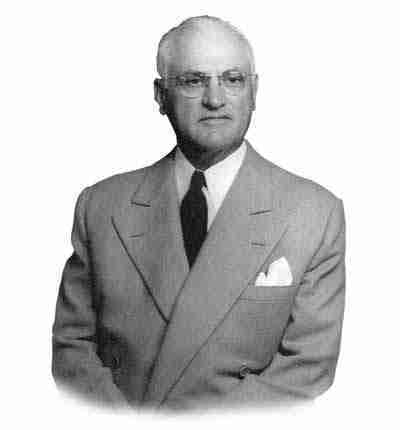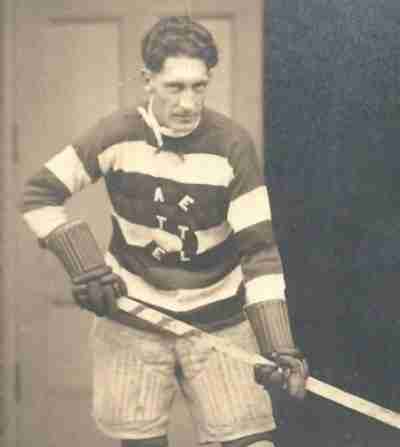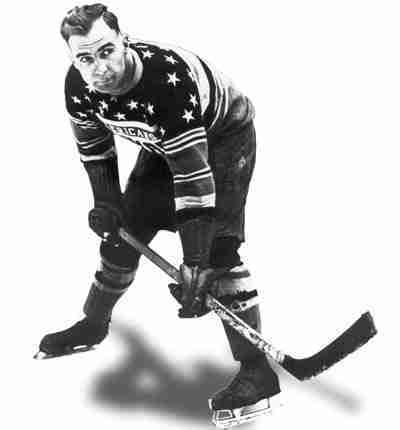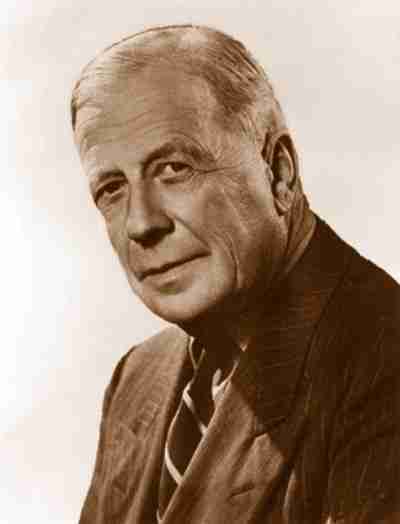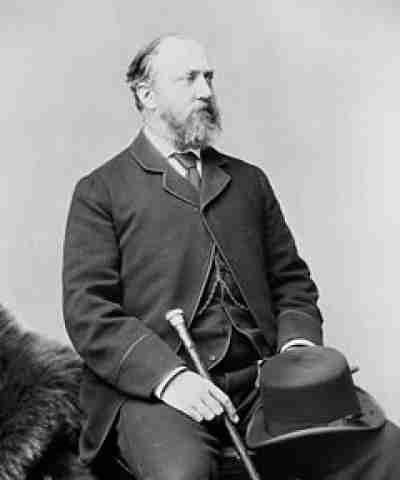Playing the vast majority of his career with the Boston Bruins, John Bucyk exemplified class and skill throughout his lengthy NHL career. Bucyk may never have been considered the best Left Wing during his day (as evidenced by only two All Star Selections) but he was a very consistent producer and retired ranked number four in points when he retired.
A spectacular athlete in his own right (he is in the American College Football Hall of Fame), John Kilpatrick became a very successful businessman and ran the Madison Square Garden Corporation and oversaw the operations of the New York Rangers for 26 years. Like other builders who have been inducted into the Hall around this time, Kilpatrick’s early induction is very much warranted.
A five year veteran himself in the National Hockey League as a bruising Defenceman for the Chicago Blackhawks, John Mariucci entered the Hockey Hall of Fame as a builder for his work in growing the game in the already hockey rich state of Minnesota. Born in Eveleth, Mariucci returned to Minnesota after his playing career ended and took over as the Head Coach of the Minnesota Golden Gophers. Rather than recruit in Canada, he focused only on Minnesota players and challenged the state high schools to develop programs. Minnesota hockey improved greatly because of his work, and he was justifiably inducted into the United States Hockey Hall of Fame in the inaugural class.
John Ross Robertson was inducted to the Hockey Hall of Fame based on his work in organizing Amateur Hockey. His staunch belief that the sport should remain amateur may seem outdated now, but it did allow for the creation of the best early leagues in the sport. One can only imagine what he would have thought of labor issues with today’s game.
John Ziegler was a controversial figure for some (as is any President of one of the four major North American sports), but it can be easily argued that the NHL was in a better place in 1992 when he resigned than from the year he took over in 1977. He navigated the tough waters of the NHL/WHA merger, the dawn of Soviet players in the NHL and tougher suspensions. His end was not the prettiest, but wouldn’t anybody rather have him still in control over Gary Bettman?
Considering that Johnny Bower spent over a decade in the minors before cracking an NHL roster at the age of 29, it is remarkable that he was able to have a Hall of Fame career. Bower debuted in the big league with the New York Rangers, but it was when he was claimed by the Toronto Maple Leafs in the Inter League Draft (whom ironically, Bower initially did not want to report too) that his career really took off.
An accomplished Goalie in his own right, Joseph Cattarinich would become known not only for his business acumen while running the Montreal Canadians, but also for his kindness and generosity. Along with Leo Dandurand and Louis Letourneau, he bought the Habs in 1921 and though he did not get the same credit that Danduran received, was part of an ownership group that made the Montreal Canadians a dominant power in the game of Hockey. He was a part owner of the franchise for fourteen years, though is not enough for a Hall of Fame induction? If it was any other team other than the Canadians, it probably wouldn’t be.
Granted, Keith Allen won a Stanley Cup Ring as a player with the Detroit Red Wings in 1954, but that was more for being at the right place at the right time, as the Defenceman only played 28 career games in the NHL and never got a goal. However, as often the case with career minor leaguers, they make outstanding coaches. Allen would become a successful coach in the Western Hockey League, and when the NHL expanded in 1967, he moved to Philadelphia to coach the Flyers. After Bud Polie stepped down as the General Manager, Allen stepped in and maintained the course that the Flyers were on. As such, Philadelphia became the first expansion team to win the Stanley Cup (which they did in consecutive years) and Keith Allen would see his name etched on the Cup again. He would enter the Hall of Fame in the Builders category, primarily for his work with the “Broad Street Bullies”. It is funny how the NHL brass seemed to hate that team when they played, but so many of them (even those who put the squad together) got into the Hockey Hall of Fame.
On a hunch, the Montreal Canadians started Ken Dryden in the 1970/71 playoffs. Dryden is now known as one of the best goalies ever, and easily the best of the 1970’s, but prior to those playoffs, he only had played in six regular season NHL games and was not known much at all. Dryden not only played well, but won the Conn Smythe Award as the Habs won the Stanley Cup that year.
Ken Reardon was out of the National Hockey League before the age of thirty due to injuries catching up to him. It is actually surprising that it did not happen sooner based on Reardon’s fearless style of play that was as punishing to his opponents as it was to himself.
King Clancy’s overall career in hockey is staggering. A very good defenceman for the Ottawa Senators and the Toronto Maple Leafs, Clancy was a three time Stanley Cup winner and a four time Post Season All Star (two on the first team, two on the second) and was a fan favorite for his tenacious and feisty play. After his career on the ice ended, he would go on to coach the Montreal Maroons and later become an NHL referee. Clancy would return to the Toronto Maple Leafs in various front office positions in the following decades. Clancy not only belongs in the Hall of Fame but as an honored member of the Toronto Maple Leafs. Thankfully, he is both.
Possibly best known for his walrus like moustache more than anything he ever did on the ice, Lanny McDonald ended his professional career in about as perfect fashion as possible, by lifting up the Stanley Cup for the first time in his final game as a member of the Calgary Flames. Everywhere McDonald went, he proved to be productive player on the ice, and popular man with the fans. He is a 1,000 career point producer and twice was a Second Team All Star. As evidence of his perseverance, McDonald won the Bill Masterton Trophy in 1983 and the respected King Clancy Award in 1988. Lanny may not have been the best player in the game, but he was a player that everybody wanted to have on their team.
Although Larry Murphy is a four time Stanley Cup winner and one of only a handful of Defenceman with over 1,000 points (he actually has 1,216), he never seemed to get his due. It is not hard to understand why, as Murphy played at a time when Paul Coffey and Ray Bourque won multiple Norris Trophies and were scoring at a Bobby Orr like rate. Murphy was also a member of Cup teams where he was not considered among the top three players on the team; or at least that was the perception. What also worked against Larry Murphy was that his career was not associated with any one team, as he played for six different ones, never longer than six years.
Easily one of the top Defencemen in his day, Larry Robinson was the top dog in the Montreal Canadians “Big 3” blue line corps that was the best in the 1970’s. Robinson was part of six Stanley Cups and named to six Post Season All Star teams. The imposing Robinson (he was six foot four, well before many NHL players were this tall) was skilled at both ends of the ice as not only was he a solid playmaker (he retired with 750 assists), but could stifle offensive attackers with relative ease. Perhaps the most impressive career statistic is his career 730 Plus/Minus which is over 130 more than Bobby Orr, who is the career number two in that category. That alone makes him a certifiable first ballot Hall of Fame entry.
Over a nineteen year career, Leo Boivin was known throughout the National Hockey League for his toughness. He was a traditional stay at home Defenceman who may have had significant offensive prowess, but rarely allowed attackers to get the best of him. Three times, Boivin would play in the All Star Game in the early 1960’s. His best seasons were with the Boston Bruins, of which he would be their captain for four seasons. Boivin was a very good player, but he may be an example of the criticism that the Hall often gets for inducting too many Original Six players, as his overall resume just does not seem to be Hall worthy.
In 1921, Leo Dandurand and his partners purchased the Montreal Canadians. For fourteen years, Dandurand not only owned the franchise, but served as the club’s General Manager and occasional Coach. Under his watch, Montreal captured three Stanley Cups in 1924, 1930 & 1931. Dandurand sold the team in 1935.
A very good player in his own right, Lester Patrick entered the Hockey Hall of Fame for a lot more than his prowess with a stick. Granted, he was a very good offensive minded defenseman, but may not have been good enough to become a Hall of Famer on his on ice skills alone. Along with his brother, he founded the Pacific Coast Hockey Association (later renamed the Western Canada Hockey League) and created a more wide open game.
Named Canada’s best athlete in the first half of the 20th Century, “The Big Train” Lionel Conacher excelled at every athletic endeavor he tried. Conacher was a latecomer to Hockey, as he only picked up the game at the age of 16, and though he would become very good, he still considered it his “weakest sport”. Conacher did not turn pro until the age of 24, when he led the expansion Pittsburgh Pirates on their blue line. Conacher would move to the New York Americans, continuing to improve his play and become a true star in his adopted sport. He would twice be a major part of Stanley Cup championships in Chicago in 1934 and in Montreal for the Maroons the following season. He was also a three time Post Season All Star in the NHL. Conacher was inducted into the Hockey Hall of Fame as a Veterans Category inductee; easily becoming the best player this group ever inducted. Incidentally, Lionel Conacher also became the only man to be inducted into the Hockey, Canadian Football, Canadian Sports and Canadian Lacrosse Hall of Fame. It is no wonder that he was called the Jim Thorpe of Canada.
Lloyd Turner may not have been a great hockey player, but he did everything he could to expand the game that he loved. Turner started two teams in Calgary and Edmonton which would become the foundation for the Western Canada Hockey League and would manage multiple teams in the area. Subsequently, he would build rinks across the country further enabling the growth of the game. Later, Turner would invest his time in furthering the Allan Cup’s media profile and would organize other hockey tournaments around the country. There are some builders whose place in the Hall may be suspect, but Lloyd Turner is not one of them.
Yes that Lord Stanley. As the Governor General of Canada, he became a hockey fan as he watched his kids play in various amateur leagues across Canada. As such, he donated the “Stanley Cup”, which evolved into the most impressive trophy in all of professional sports. It was initially contested as a challenge cup for Canada’s top amateur teams, but became the prize awarded to winner of the National Hockey League. Even if he was not into hockey, just donating this award would be enough to put him in.


